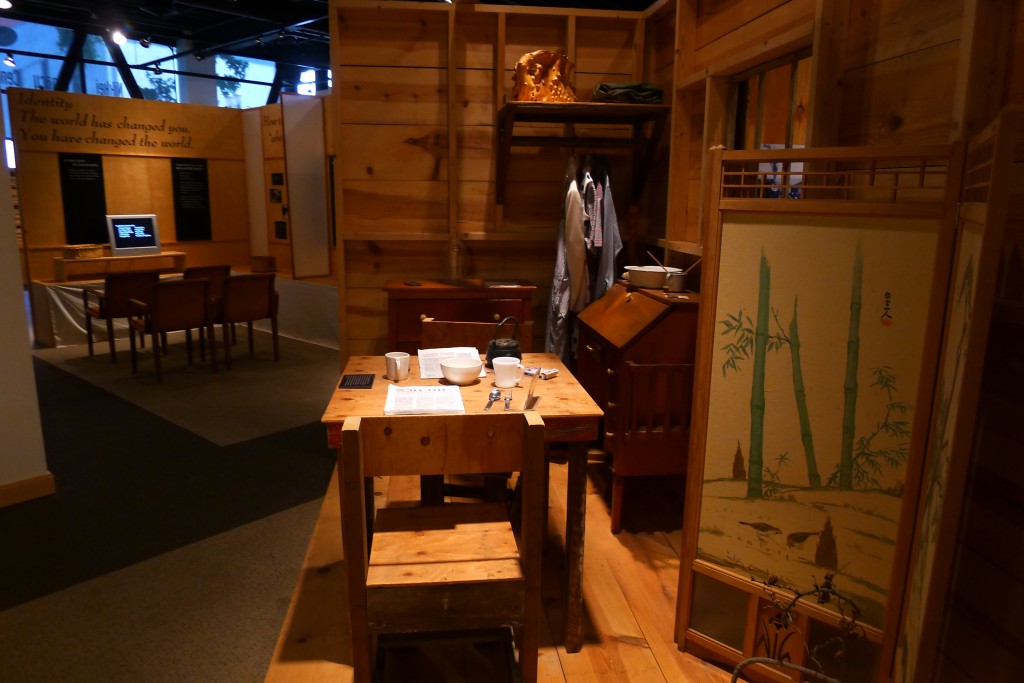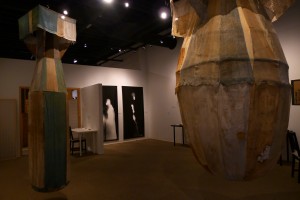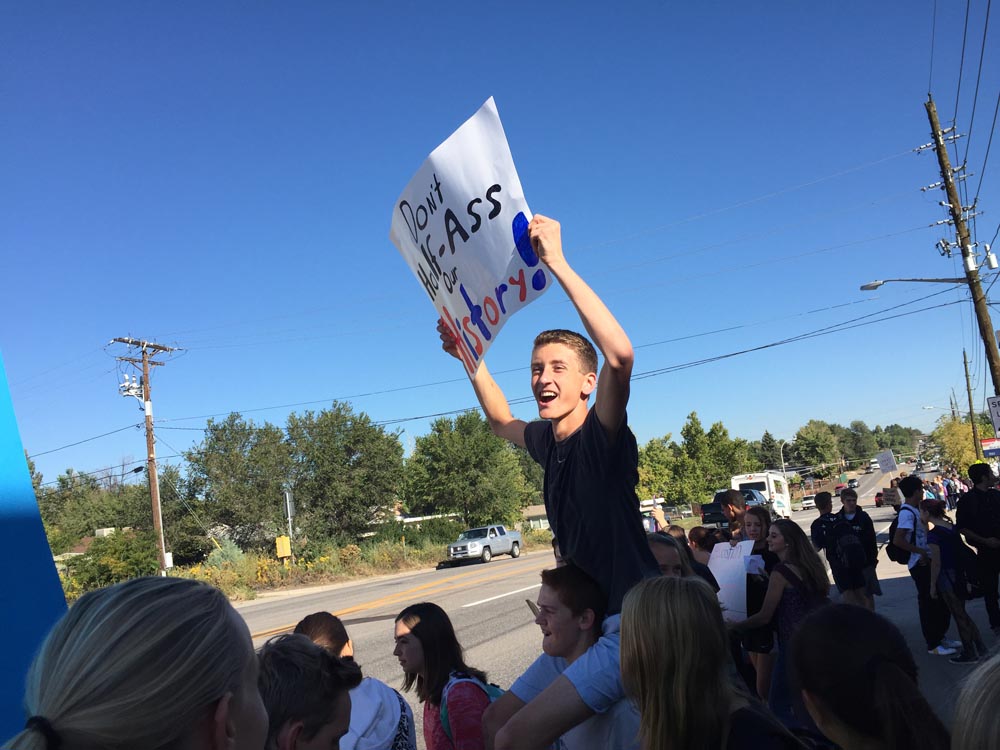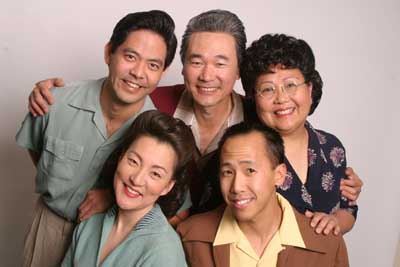June 9, 2013

I visited the
Oregon Nikkei Legacy Center in Portland, Oregon last week while on a business trip to the northwest, and I was struck at how important organizations like it, and the museum it operates are for our community.
Institutions from the largest such as the
Japanese American National Museum in Los Angeles to one-room repositories such as the Nikkei Legacy Center or the
Amache Museum in Granada, Colorado, are repositories for our collective memory as a community, and home to our history.
Portland’s museum is a project of the Oregon Nikkei Endowment, and it’s tucked into a storefront in the city’s Old Town district, in the midst of what used to be the
Nihonmachi, or Japantown neighborhood.
One of the first items on display inside the door is a scale model of the district, with all the buildings labeled with the Japanese businesses that used to thrive. Only a couple of the businesses still exist, but they’re no longer in the neighborhood – the Nikkei Legacy Center is the only remaining sign of the community that was based here before WWII.
The museum does a great job within its limited space of tracing the Japanese’s arrival in the area, the variety of businesses, and then imprisonment during WWII. There are artifacts, models, and text explaining historical milestones.
A small area features a re-creation of an internment camp barrack's interior, with actual tables, chairs, desk and dresser (shown above) that were all built by internees in Minidoka, Idaho, where Portland JAs were imprisoned. The historical timeline of the permanent exhibit ends with a small video viewing area with interviews with local Nisei about the war years.

In a small rotating gallery space in the back is a powerful, somber art exhibit (right) that addresses the horror of the atomic bombings of Hiroshima and Nagasaki, titled “Shadows and Black Rain: Memories, Histories, Places, Bodies.”







 The next interview scheduled for Erin and my
The next interview scheduled for Erin and my  There are very few non-fiction books that I would insist that anyone interested in Asian American history and culture must read. There are other important books, but these are the ones that have helped me form my sense of identity as an Asian American.
They include Helen Zia's "
There are very few non-fiction books that I would insist that anyone interested in Asian American history and culture must read. There are other important books, but these are the ones that have helped me form my sense of identity as an Asian American.
They include Helen Zia's " Asian Americans are finally showing up in American pop culture at large, but Asian American fine artists are still mostly invisible. Only a few have had notable -- or rather, noted -- careers in the art world.
When I was an art student, I didn't think much of my heritage. You might say it was my "Banana Period." As an artist, I didn't appreciate my ethnicity, even when I was included in a group show of Japanese artists and my painting was bought by a famous playwright (keep reading below).
I simply didn't identify myself as an Asian American artist. I was simply an artist, and the art I made was informed by my 8th grade art teacher, Julie Maiolo, my high school art teacher, Jay Filson, and all my professors (especially color theorist Mary Buckley), as well as the art history teachers and books I soaked up. Which meant my awareness of art was all Euro-centric.
In all of that art history and theory, what I knew of Asia in art was that calligraphy was beautiful, ink painting was hard but similar in process to watercolor, and that Japanese woodblocks inspired the French Impressionists that I loved so much.
So it's understandable that I assumed any artist with an Asian name was Asian, not Asian American. For instance, for years I thought the sculptor
Asian Americans are finally showing up in American pop culture at large, but Asian American fine artists are still mostly invisible. Only a few have had notable -- or rather, noted -- careers in the art world.
When I was an art student, I didn't think much of my heritage. You might say it was my "Banana Period." As an artist, I didn't appreciate my ethnicity, even when I was included in a group show of Japanese artists and my painting was bought by a famous playwright (keep reading below).
I simply didn't identify myself as an Asian American artist. I was simply an artist, and the art I made was informed by my 8th grade art teacher, Julie Maiolo, my high school art teacher, Jay Filson, and all my professors (especially color theorist Mary Buckley), as well as the art history teachers and books I soaked up. Which meant my awareness of art was all Euro-centric.
In all of that art history and theory, what I knew of Asia in art was that calligraphy was beautiful, ink painting was hard but similar in process to watercolor, and that Japanese woodblocks inspired the French Impressionists that I loved so much.
So it's understandable that I assumed any artist with an Asian name was Asian, not Asian American. For instance, for years I thought the sculptor  Erin and I attended a talk and book signing with 9News Political reporter
Erin and I attended a talk and book signing with 9News Political reporter  He didn't act it. Looking his usual boyish self, and speaking with an impassioned conviction, the tall, lanky Schrager reminded me of the young Jimmy Stewart in the 1939 Frank Capra film, "Mr. Smith Goes to Washington." By the time he finished and everyone convened downstairs for surprisingly good food from Japon and a long line of people buying his book and getting personalized autographs, Schrager had been accepted as an honorary Japanese American.
He didn't act it. Looking his usual boyish self, and speaking with an impassioned conviction, the tall, lanky Schrager reminded me of the young Jimmy Stewart in the 1939 Frank Capra film, "Mr. Smith Goes to Washington." By the time he finished and everyone convened downstairs for surprisingly good food from Japon and a long line of people buying his book and getting personalized autographs, Schrager had been accepted as an honorary Japanese American. 
